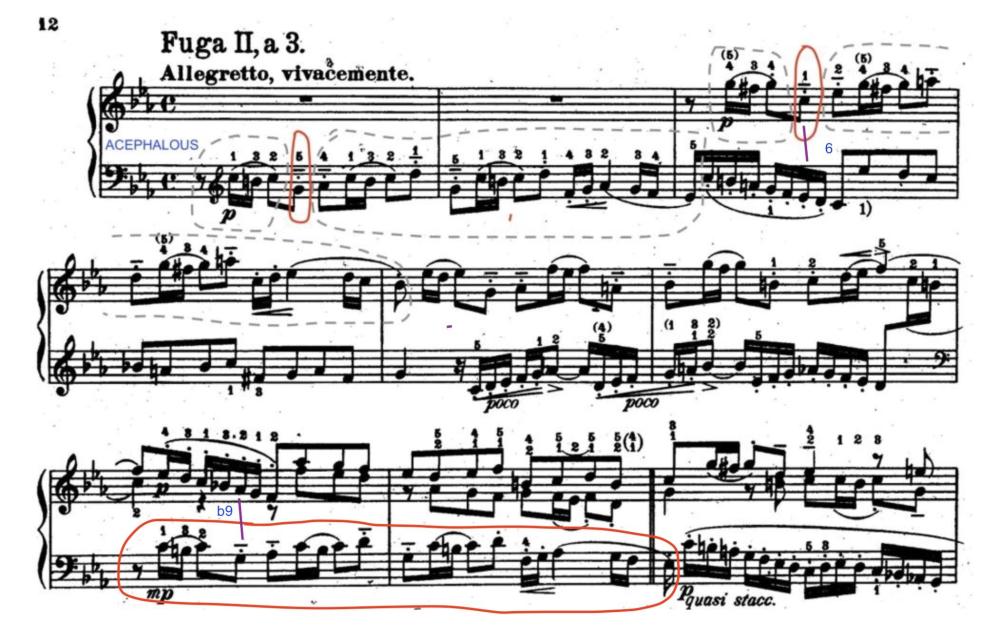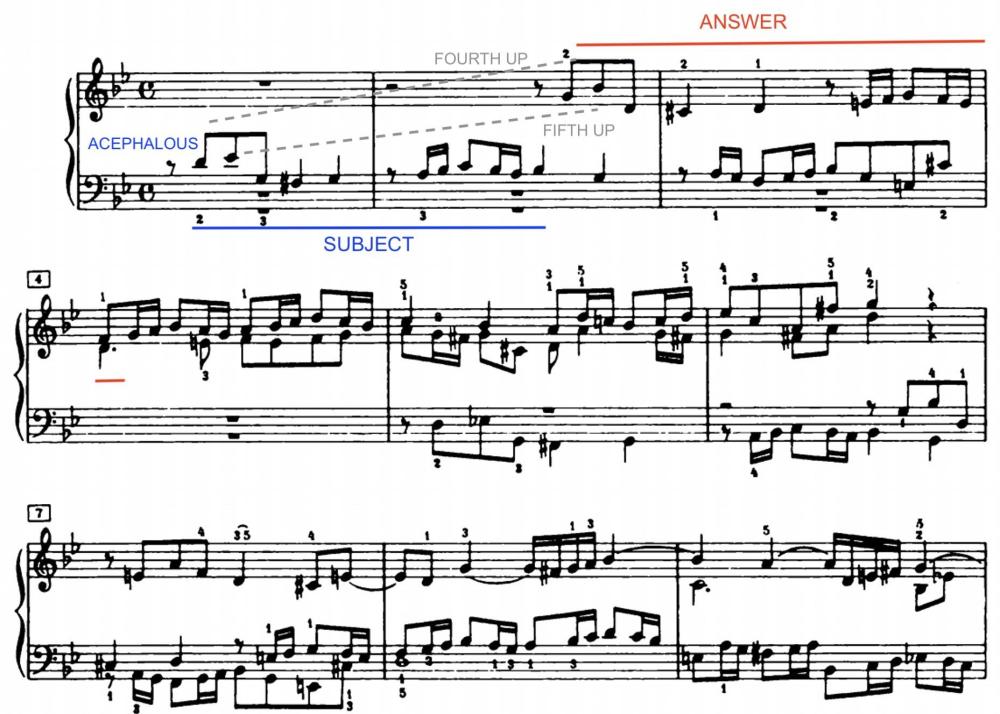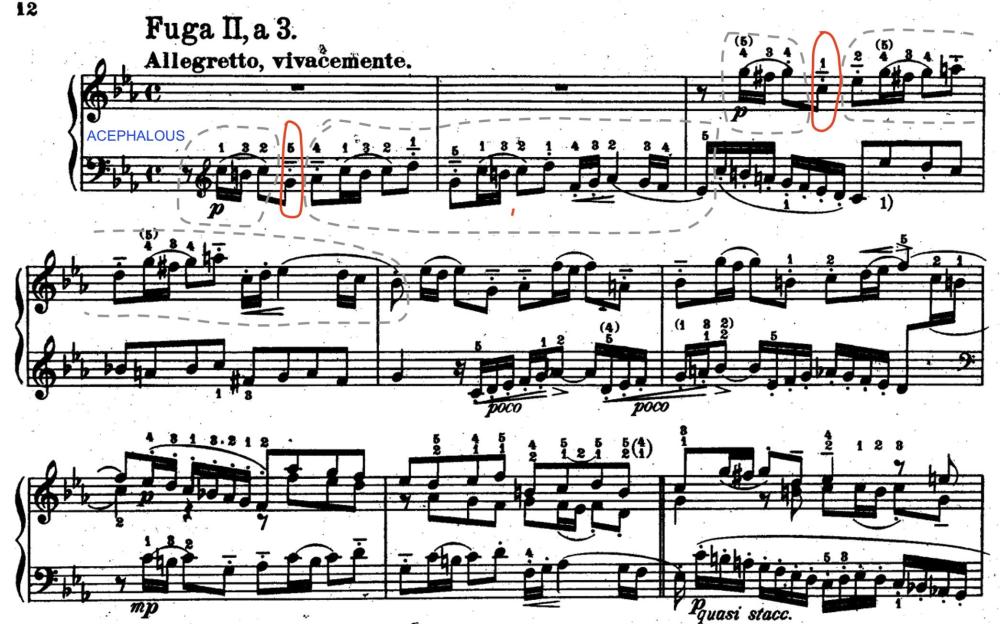Leaderboard
Popular Content
Showing content with the highest reputation on 07/18/2023 in all areas
-
Hey Alex, I like both your versions of it! The first one is more magical like the magical forest Papageno stayed in, whereas the last one is grand. Your cor anglais in around 0:40 and autoflute in 1:50 is beautiful. Maybe adding triangles there will make it more magical! The clarinet in 2:20 is great too! I always like your woodwind usage. Maybe you can try an orchestral variation like those by @PeterthePapercomPoser and use the first one as the announcement of the themes and the subsequent ones as variations. Thx for sharing! Henry2 points
-
I am not very sure about this. In the first example, it would have been very easy for Bach to put that first note of the answer on the A and respect the transposition to the fifth. But he didn't do it. But in the case of the fugue in C minor, the note that "fails" is not the first note. Nothing would have happened if the A had been transposed to the fifth. We could think that Bach lowered this note to a C to fit better with the counter-subject that the left hand is doing (Eb-Re).... Since Eb-C forms a sixth. However, when the tenor enters with the subject (last staff), it is the same (identical) as the initial subject, in the same key, and the counter-subject now above and in transposition is also the same as when it appeared the first time, so now there is a dissonance between the note G and the Ab above. Ok, it can be considered a passing note with the B flat above. So why didn't he do the same in measure 3? Rephrasing everything, why in the transposition to the upper fifth of the subject there is ONE NOTE that, SOMETIMES, is transposed to the fourth?2 points
-
Lately, I've been trying to improve my knowledge (I don't know if my writing as well) about the Fugue. Apart from observing the intervals and parallels, which I need to be more aware of, I've been asking myself some questions that I think are important and I've been doing some research and thinking about it. In this thread I want to point out two things. As an example, I put the expositions of the fugue in Gm and the fugue in Cm, both by Bach. 1. Why do many fugues have an ACAPHALOUS beginning? That is, they start with some silence and the notes in weak part. 2. Why in the answer to the subject, which occurs a fifth above, is there a note that Bach transposes a fourth? In the first (fugue in Gm) the first note is a D, and it is raised a fourth (G), while the rest of the answer is raised a fifth. In the second (fugue in Cm), the fourth note, a G, of the subject, is raised to C = a fourth. The rest is raised a fifth. I have my theories and answers, but I would like more opinions.1 point
-
Hi all, It's been a while since I posted. A Soldier's Dairy is a work composed over the last 4 months. It is a very long piece - 9 minutes. The work is in narrative form, in that - the structure is a bit free flowing; although, I worked hard to maintain balance with the relative rhythmic, melodic, and harmonic motifs integrated throughout the work. I worked on this composition with a new Mentor (finally found one). So this is the first complete draft - 95% or so done. The engraving still needs work as does polishing off chord note placement etc. My objective here is too create a work that flows with interesting and effective transitions. Each segment represents a moment/time in a day for the Soldier. For me - the work is best experienced as a "Movie Score". I would appreciate al comments.1 point
-
I thought the arpeggios in the codetta were too much in the background, so I tried revising the orchestration, so after a few revisions and a little help from my friends, here is draft 3.1 (it doesn't deserve it's own new number, not a drastic change): Symphony in F minor.mp3 Symphony in F minor.pdf1 point
-
Hi @Hcab5861, Should the title be "Waltz Simplex in C# 'Minor'"? I quite enjoy this simple waltz especially when it's in my favourite key. My favourite section is the middle section in tonic major when you add a voice to form some counterpoint there! I agree with Peter on the trill issue and the solution of using mordent. If the Musescore doesn't work well, you can simply have those notes written out in 16th notes triplet. For b.24 the trill will better be a lower mordent G#-F#-G# since there's already an A after it. I agree with Luis on this too, you can just have the top notes for top voice without crossing I think. P.S. Great edits LoL... Thx for sharing! Henry1 point
-
Hey @Beethoven is God, I only listen to the updated version and I like it. I love in your introduction to dynamic contrast combined with the contrast of register. Maybe lowing an octave for the cello and double basses with be great for all the contrasting p passages but that's personal. Maybe adding a bass trombone there will help too, but again it's personal. I like the unison you use throughout the introduction as it makes it less full and hence less directional. For the sonata proper, will you also have the 2nd violins and violas to backup 1st violin in b.26-27 and 29-30? The strings seems weak to me under the brasses. But I like the energy in it. I like your transition too, and it's surprising you are moving to C major rather than C minor. I feel like the 2nd subject too short. For me it's divided into sections: b.47-53, b.54-61, and b.62 to 73 for the codetta. I feel like the struggle between C major and minor in the first two phrases is not enough for the beautiful triumph and fanfare of the codetta. I think you can at least add one more contrasting theme after b.61 in C minor, before getting into the triumphant codetta. I love your codetta! For me I go for an elision given how excited this movement is, as in the 1st movement of Haydn's Farewell Symphony. I do think it seems breakoff with the second theme. If you add a contrasting theme between the original second theme and codetta, I think Peter's breathing issue can be saved by adding a new intervening theme. Even if you would like to retain the bar, you can at least keep the motion going by having crescendos and upward appreggios instead of a static minim to keep the pace going. And actually I don't agree with Peter's opinion of having the previous phrase cutting off by having an elision, since for me having a cut off there will push the climax even further and thus the tension can be greater to be solved by the fanfare codetta. That's my opinion. Thx for sharing! Henry1 point
-
Nice job! I like this updated version even better! It's no secret that I am in favor of all the changes you decided to make to this piece and I like how you replaced the trills with those runs with turns inside of them - well done! To me the runs could have maybe been given even more body by including the violas starting on the F an octave lower, but you're the ultimate arbiter of whether you want to do that or not. I think it works well the way it is because it gives the previous phrase space and finishes the phrase before beginning a new one. This is in contrast to the phrase ending in measure 38 which uses elision, where the end of the previous phrase is actually the beginning of the next at the same time (the 16th bar of the 1st theme is also the 1st bar of another reiteration of the 1st theme but in the trombones - this works because different instruments play the various different fragments in different registers creating an interesting musical interplay and canonic imitation and also allowing them to breathe and the music itself to breathe as well.) But if you had done this kind of elision in measure 61, it would have sounded like the previous phrase was just cut off. Also, the horns and bassoons wouldn't get a break from playing. This symphony is coming along quite nicely! It's definitely out of the "orchestral sketch" phase of production imo. I'm stoked to hear how you develop it! Thanks for sharing!1 point
-
This is what my main theme sounds like arranged for sting orchestra and brass. I quite like it. So now I need to write a linking section leading into this, and an ending.1 point
-
So here's a second draft of the exposition. Replaced the introduction totally, changed the transaction, changed the instrumentation, changed the codetta. Also got rid of the "Triumphalis" part and I'm gonna give in to the dread of it in the development. And last - I used Musesounds this time. Specific question I thought about - does the long note between the second theme and the codetta with the brass arpeggios makes it seem too sectional? What if I took the whole codetta and moved it to one bar earlier so that it continues the second theme immediately?Symphony in F minor.pdf Symphony in F minor.mp31 point







.thumb.png.8b5b433a341551e913a34392660bc95b.png)